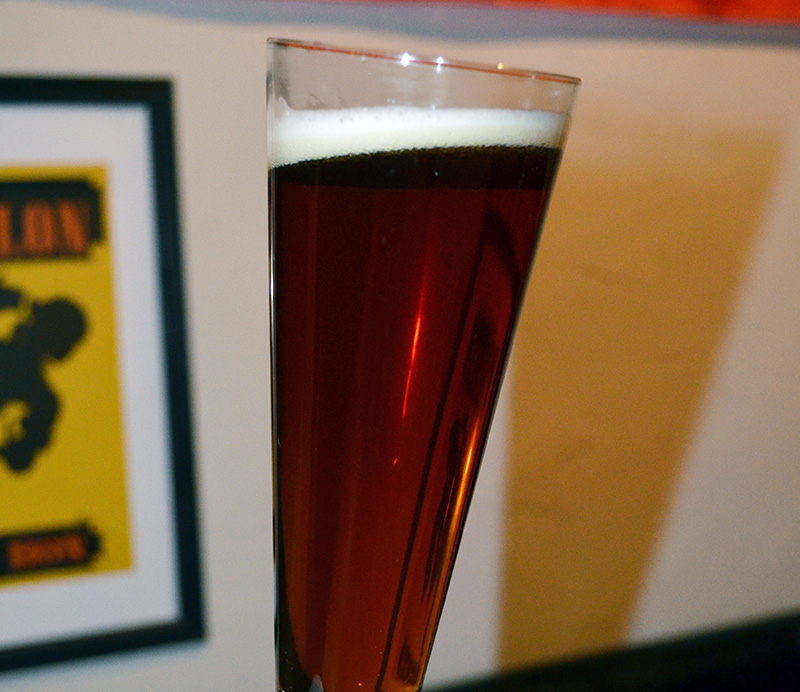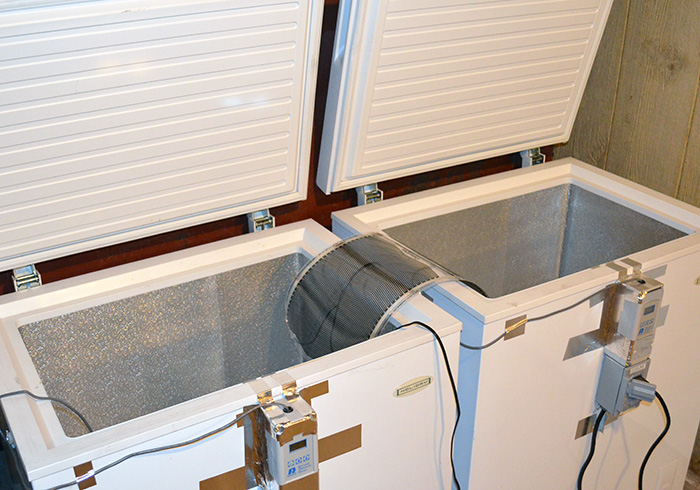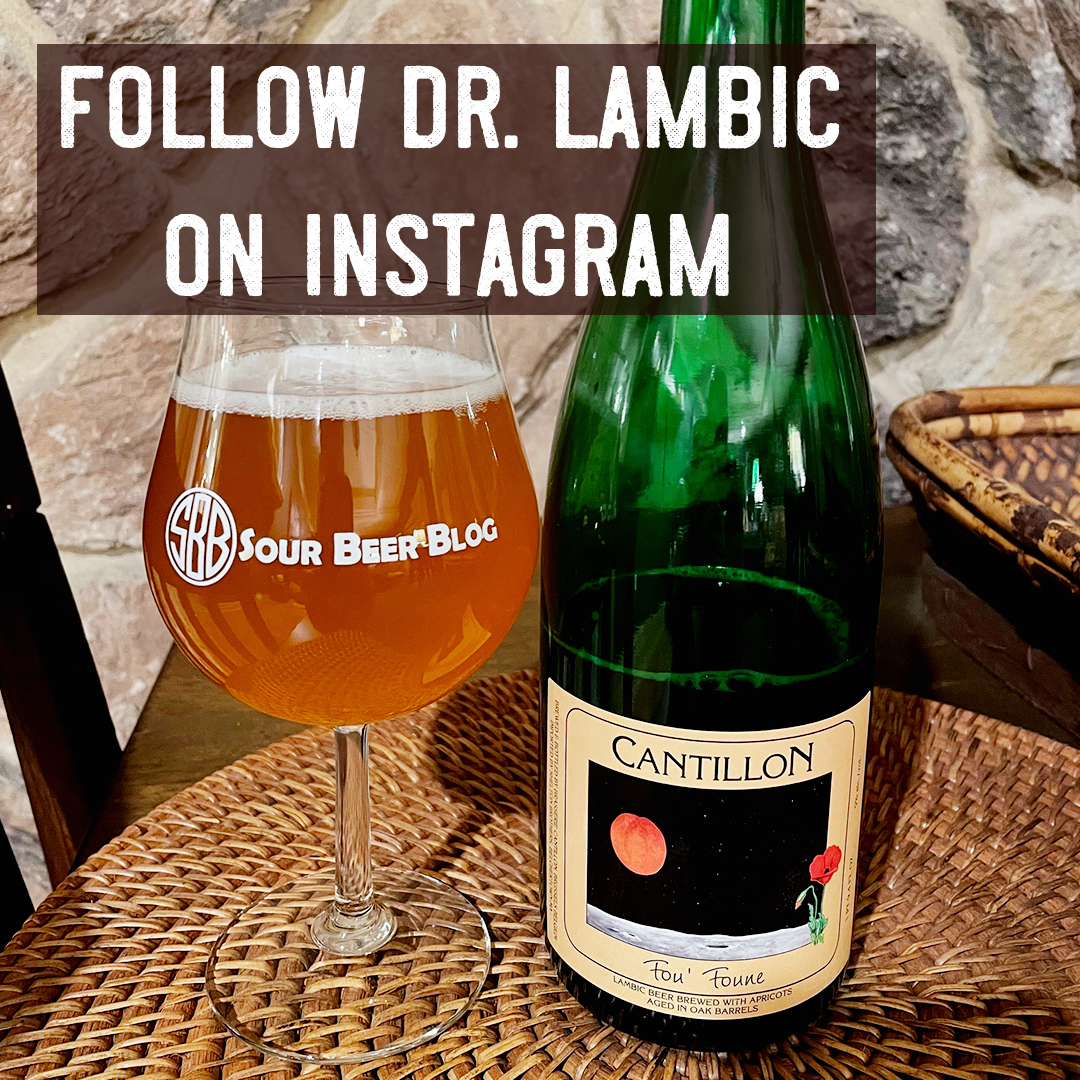Hello Homebrewers!
Today I would like to share my recipe and process for making a very tasty sour red ale. I was originally inspired to craft my own version of a sour red ale after drinking a bottle of Jolly Pumpkin’s La Roja. My goal was to make a beer based on a Flanders Red but with a few variations from the classic style. Unlike a classic Flanders Red, I wanted my version to have little to no vinegar character as well as having a greater Brettanomyces funk. Lastly, I wanted to ensure that my version had a good intense sour presence. It had been my experience that a lot of homebrewed sour beers would have all the attributes of commercial sour beers except for an intense sour character. It seemed that when using some traditional souring methods many beers would take several years to become properly sour or potentially never sour fully.
This led me to try out a somewhat different fermentation schedule which I can now report as successful after having tested it on multiple recipes over the past few years. The trick to this schedule is to allow the bacteria Lactobacillus time to fully establish itself and begin souring the wort before any species of yeast begins using up all of the sugars that the Lactobacillus need for growth and souring. I will explain this in more detail but first I will need to describe some of the equipment I use to make this process possible.
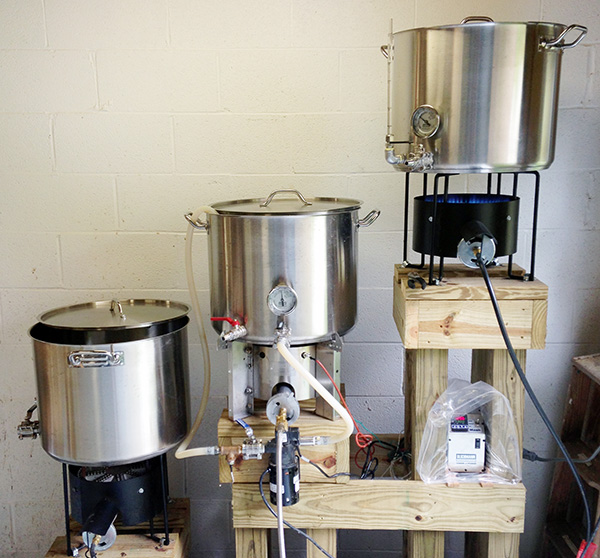 When brewing, I use a 3 vessel, 15 gallon, stainless system with a recirculating mash tun to produce the wort. This system is direct fired with propane and allows for multiple step mashing. In regards to sour brewing though the system used for wort production is generally not critical, and equally great sour beers can be made using a variety of brew setups including extract brewing. Great beer, including great sour beer, is made during fermentation. The system I use to ferment my beers uses a small top loading chest freezer, a heating element called a ferm-wrap, and an electric temperature probe which controls both devices. I ferment my beers in glass carboys and use a carboy-cap with a stainless steel dip-tube so the temperature of the beer can be read. The temperature controller allows me to dial in a setting and then turns on the heater or freezer as need be to hold the beer at that temperature setting while it is fermenting.
When brewing, I use a 3 vessel, 15 gallon, stainless system with a recirculating mash tun to produce the wort. This system is direct fired with propane and allows for multiple step mashing. In regards to sour brewing though the system used for wort production is generally not critical, and equally great sour beers can be made using a variety of brew setups including extract brewing. Great beer, including great sour beer, is made during fermentation. The system I use to ferment my beers uses a small top loading chest freezer, a heating element called a ferm-wrap, and an electric temperature probe which controls both devices. I ferment my beers in glass carboys and use a carboy-cap with a stainless steel dip-tube so the temperature of the beer can be read. The temperature controller allows me to dial in a setting and then turns on the heater or freezer as need be to hold the beer at that temperature setting while it is fermenting.
This equipment, or something with similar heating and cooling capacity, is necessary for brewing a sour beer using a Lactobacillus-first fermentation because Lactobacillus prefers to ferment at about 110 degrees Fahrenheit.
Here’s the recipe:
Ingredients:
- 45.8 % Pilsner Malt
- 27 % White Wheat Malt
- 13.1 % Caramel Wheat Malt
- 9 % Rye Malt
- 2.6% 60-L Crystal Malt
- 2.5% Special Roast Malt
- 1 to 2 ounces Crystal Hops (3.5% AA) added to Mash.
Mash:
- 130 F for 15 minutes
- 158 F for 45 minutes
- 168 F for 10 minutes
Boil:
- Boil for 90 minutes
- Whirlfloc @ 15 minutes until end
- Servomyces @ 10 minutes until end
- Original Gravity = 1.062
- Cool wort to 110 F and transfer into carboy.
- Pitch 1 fresh vial of Lactobacillus delbruckii (WLP677) per 5 gallons of wort.
- Ferment for 2 to 4 days at 110 F.
- Cool fermentation to 65 F.
- Pitch enough vials or an appropriately sized starter of Dry English Ale yeast (WLP007) & oxygenate for 1 minute.
- Ferment at around 65 to 67 F until fermentation complete. I like to turn my temperature up a few degrees toward the last 25% of fermentation to drive attenuation & promote healthy fermentation characteristics.
- Final gravity at this point should be around 1.018 (70% Attenuation).
- Transfer beer off of primary yeast & pitch 1 vial of Brettanomyces lambicus (WLP653) per 5 gallons. At this point I transfer from a 6.5 gallon carboy into a 5 gallon carboy and I fill the carboy up to the neck to reduce surface area.
- Age between 60 to 70 F.
- Brettanomyces characteristics will develop over 3 to 6 months on average.
- Over time attenuation will continue to increase to near 100%
The reason this process works well is because Lactobacillus is the organism which provides the lactic acid and sour presence in most sour beers. By allowing this bacteria to grow, feed, and properly establish itself in the beer before yeast is introduced, it virtually ensures that the beer will reach a proper level of souring. At this point a standard strain of brewers yeast can ferment the beer. After this, introducing Brettanomyces into the low-sugar, higher alcohol, and higher acid environment of the beer will make the Brettanomyces work hard to survive. In this environment the Brettanomyces will slowly consume the longer chain residual sugars in the beer and produce a variety of funky characteristics.
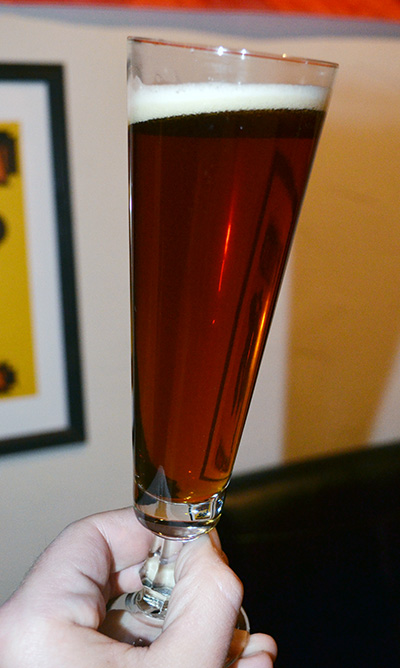 When aging this beer, it is a good idea to keep the carboy filled up as far as possible (into the neck of the carboy). This reduces the surface area and potential for the beer to pick up oxygen that leaks through the rubber carboy stopper and airlock. Reducing oxygen pickup during aging both prevents staling and prevents the formation of vinegar flavors.
When aging this beer, it is a good idea to keep the carboy filled up as far as possible (into the neck of the carboy). This reduces the surface area and potential for the beer to pick up oxygen that leaks through the rubber carboy stopper and airlock. Reducing oxygen pickup during aging both prevents staling and prevents the formation of vinegar flavors.
If brewed and fermented well this recipe will produce a very nice sour red ale. The sour level will be fairly high and within 3 to 6 months the Brettanomyces will produce moderate to high levels of bready, leathery, and farmyard-like flavors and aromas. The crystal and carmel malts in the recipe will retain some residual sweetness to help balance these flavors and will still be present at the 3 to 6 month range along with a medium body and mouthfeel still present. If aged longer (the batch I am currently drinking is 18 months old) the body will thin out and the beer will become increasingly dry.
This is a recipe I have brewed multiple times over the years because I have found the beer to consistently turn out well and has always been an enjoyable one to drink. Hopefully you will enjoy it too! Please write in or comment with any questions.
Happy Brewing!
Matt

